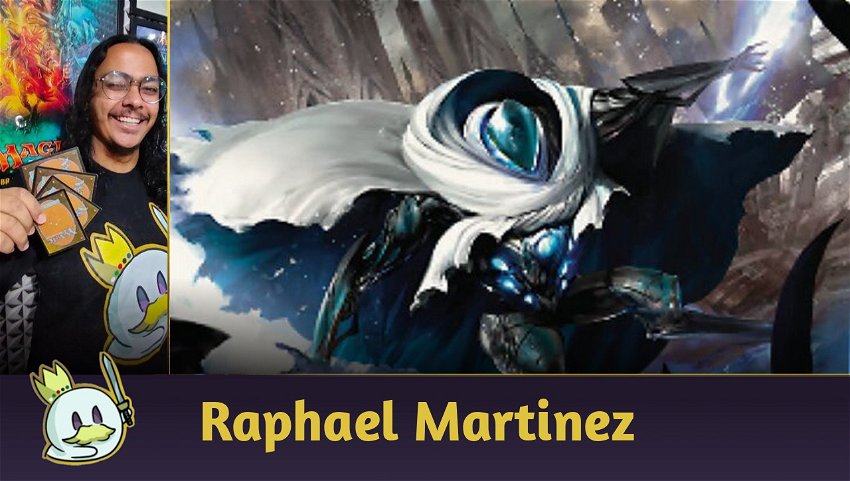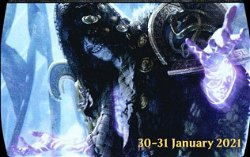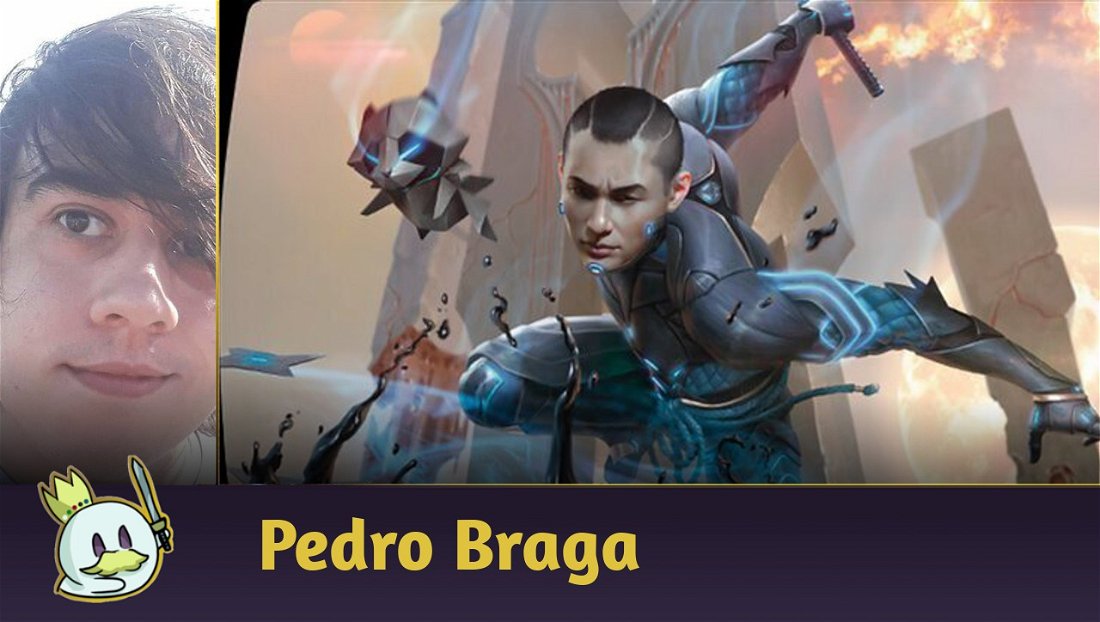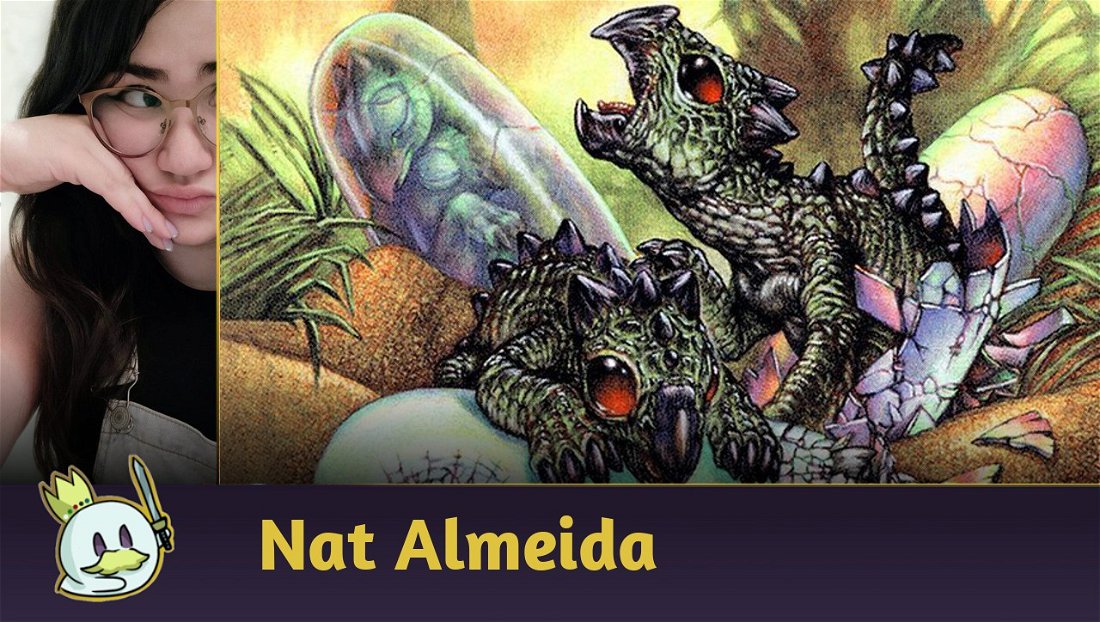About the Deck
In the The Brothers' War set, the Prototype mechanic came along, which allows you to cast your creature with different mana, size and color cost, but they remain with their abilities and types.
The two cards with this mechanic used in this deck are: Arcane Proxy, which is useful for us to cast our low-cost spells from the graveyard, and Phyrexian Fleshgorger, which is an excellent creature both for an aggressive plan and to contain our opponent's aggression.
Of course the deck has a few ways to take more advantage of these creatures, and for that, we count with Release to the Wind, which allows us to exile one of these creatures which are cast for a low-cost, and now we can use them without paying their cost, in their "complete" form.

Besides this strategy, the deck still has Valki, God of Lies // Tibalt, Cosmic Impostor which forms a nice synergy with Release to the Wind, in which you can cast Valki, God of Lies for two mana, then cast Release to the Wind and cast Tibalt, Cosmic Impostor for just 3 mana, being able to hoard a lot of value to the battlefield.
We also count with removals, such as Fatal Push, counterspells, such as Spell Pierce and card draw, such as See the Truth which has great synergy with Arcane Proxy, which when casting See the Truth from our graveyard, it will make us draw 3 cards.

Dimir Prototype Decklist
Mulligan e Playstyle
As it is a Midrange deck, we can adopt many playstyles and deckbuildings, as it can be adapted to each metagame it's supposed to face. For today's article, we'll use a list more focused on winning against aggressive decks, with more removals. I've used it in a tournament recently, the Pioneer Royale 175.
Our gameplan should vary according to our opponents.
Overall, we should always look for initial hands with interaction or draws, so we can take advantage of our initial turns, as our creatures cost around 3 mana. Valki, God of Lies // Tibalt, Cosmic Impostor is an excellent card to identify our opponent's hand and this way enhance our gameplan - don't hold it always thinking of using it with Release to the Wind.
Against Aggro decks, we use our removals alongside Arcane Proxy to contain our opponents' aggression, using it like a sort of Snapcaster Mage (with the difference being in that ours doesn't have flash).
After controlling our opponents' battlefield, we must use our Phyrexian Fleshgorger to regain some health and start our aggressive plan.
Against more Control decks, we should behave more aggressively, trying to cast our creatures as soon as possible, and from then on, use a strategy to protect them. For that, Malakir Rebirth // Malakir Mire is excellent to transform our Phyrexian Fleshgorger from a 3/3 to a 7/5 with Ward. As, when it returns to the battlefield, our Prototype creatures return to their original form.
Gameplay
Sideboard Guide
Azorius Control
Side in

Side out

This match is going to be a grind, in which what should prevail is card advantage.
At game 1, we have a lot of "dead" removal in the match, as the opponent's deck doesn't have a lot of creatures, so it's a good idea to shy away from hands with numerous removals. We should play as soon as possible our creatures, and after that, use Release to the Wind and Malakir Rebirth // Malakir Mire to protect them.
Try to use Thoughtseize and Spell Pierce to remove the enemy planeswalkers and their card draw. The play Thoughtseize + Arcane Proxy is excellent for this match.
Post-side, we take out our creature removals and increase our counterspells, but our gameplan doesn't change much. We should prioritize card advantage, and we won't be able to close out the game quickly, as our opponents need to resolve our few creatures, so don't use Release to the Wind aggressively, and instead try to use it responsively.
During this match, key cards that can define the game are our lands that can become creatures, such as Hive of the Eye Tyrant and Hall of Storm Giants.
Mono-Green Ramp
Side in

Side out

This is a match in which, if we can delay our opponent's gameplan, that's all we need to win. Here we can be as aggressive as possible in the initial turns, and if possible, play Valki, God of Lies // Tibalt, Cosmic Impostor as soon as possible and transform it, which generates us a lot of value while it is tough for our opponents to deal with a planeswalker.
Post-side, we look for cards that favor our plan even more, always trying to be aggressive because if we give our opponent time, they'll develop their board and it will be our defeat. We look for cards that exile instead of destroy, due to pieces like Old-Growth Troll and Cavalier of Thorns.
Rakdos Midrange
Side in

Side out

This is a tough match. Our opponents have lots of removals, so, we should assume a more Control style, not putting our creatures hushed on board. We should first remove our opponent's threats, so during game 1 we should take advantage of Ritual of Soot, so we can remove 2 to 3 enemy creatures - particularly Graveyard Trespasser // Graveyard Glutton, which has ward. And save our spot removals to deal with Sheoldred, the Apocalypse.
Post-side, we optimize our removals, and in this game we should try to discard cards which give our opponents advantages, such as Fable of the Mirror-Breaker // Reflection of Kiki-Jiki and keep the same strategy: try to win the game with just one or two creatures on board.
Sultai Lotus
Side in

Side out

For game 1, we should try to be as aggressive as possible, being able to play a 7/5 Phyrexian Fleshgorger as soon as possible and use our only interaction cards such as Spell Pierce and Thoughtseize to remove the Pore Over the Pages, which is one of our opponent's main cards regarding their gameplan.
This is a match we should try to play after game 2, as we will have already taken out our removals, which are dead cards, and increase our counterspells.
But the strategy is the same: use our turn 3 to place a threat on board, and from then on, try to delay our opponent's gameplan. In this match, it is interesting to play Release to the Wind during our opponent's end step and in our turn play our creature without paying its mana cost, this way being always ahead with mana saved to answer our opponent's plays.
Mono White Aggro
Side in

Side out

This is a match in which we should value the play of removal at turn 2 followed by Arcane Proxy at turn 3 to have more removal and a body on board.
Here we have an advantage over our opponent's main removals because Skyclave Apparition can remove our Prototype creatures, but by killing it, the spirit we get is a 7/7 creature, which is our cards' original mana cost. The same goes for Brutal Cathar, which, by returning our creature to the battlefield, returns to its original form.
Post side, we increase our removals to disrupt our opponent's aggressive gameplan, and we take out cards which are not that interactive, such as Spell Pierce, as the opponent's deck is basically composed of creatures.
Final Thoughts
This is my cue! In case you have any questions about the deck, I'm available in the comment section.
See you next time!















— commentaires 0
, Réactions 1
Soyez le premier à commenter